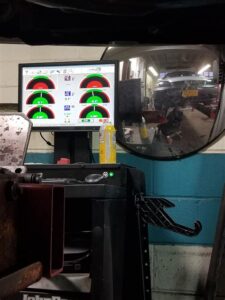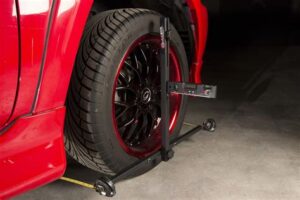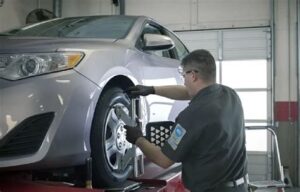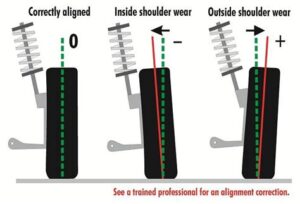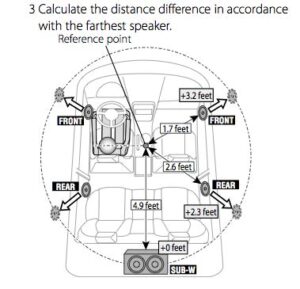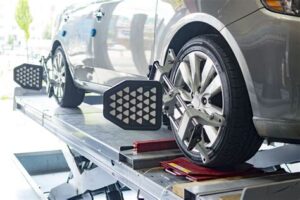Discover the significance of wheel alignment, types of equipment, technological advancements, benefits of machines, and tips for choosing the right alignment tools.In the world of automotive maintenance, proper wheel alignment is a crucial aspect that often goes unnoticed. Misalignment can lead to a range of issues, from uneven tire wear to compromised handling, ultimately affecting vehicle safety and performance. This blog post delves into the significance of wheel alignment, exploring various types of car alignment equipment and the latest advancements in alignment technology. Whether you’re a professional mechanic or an enthusiastic DIYer, understanding the benefits of using alignment machines can enhance your ability to maintain optimal vehicle performance. Furthermore, we’ll guide you in choosing the right alignment equipment to ensure your car runs smoothly and efficiently. Join us as we unravel the essentials of car alignment equipment and why it matters for every vehicle owner.
Importance of Wheel Alignment
Proper wheel alignment is crucial for ensuring the longevity and performance of your vehicle. When the wheels are properly aligned, it leads to enhanced handling, better fuel efficiency, and increased tire lifespan. In short, wheel alignment affects multiple aspects of vehicle performance and safety.
Misalignment can occur for various reasons, such as hitting a pothole, curb, or even regular wear and tear. When the wheels are not aligned correctly, it can result in uneven tire wear and can even lead to more severe issues, such as suspension damage. Hence, having regular wheel alignments can save you money and improve your driving experience.
In addition to economic benefits, wheel alignment is essential for safety on the road. Properly aligned wheels ensure that your vehicle maintains a straight path while driving. This is particularly important during high-speed driving or emergency maneuvers where precise steering is vital. Regular checks and alignments can help prevent dangerous situations caused by misalignment.
Types of Car Alignment Equipment
Car alignment is crucial in maintaining vehicle performance, safety, and tire longevity. To achieve optimal alignment, various types of car alignment equipment are employed in automotive shops. Each type of equipment serves specific purposes and employs different technologies to ensure a proper alignment of the vehicle’s wheels.
Below are some of the most common types of car alignment equipment:
| Type of Equipment | Description |
|---|---|
| 2D Alignment Systems | These systems utilize camera technology to determine the alignment of the vehicle’s wheels. They provide accurate measurements in two dimensions and are often less expensive than their 3D counterparts. |
| 3D Alignment Systems | Advanced systems using multiple cameras and sensors to provide a comprehensive three-dimensional view of wheel alignment. They offer higher accuracy and can quickly identify problems. |
| Laser Alignment Systems | These systems employ lasers to measure the alignment of the wheels. They are known for their precision and speed, making them a popular choice among professionals. |
| Alignment Racks | Specialized platforms where vehicles are positioned for alignment checks. They may be equipped with any of the above alignment measuring systems. |
| Camber Gauges | Manual devices used to set the camber angle of the wheels. While not as common as computerized systems, they are still relied upon for specific adjustments. |
Each type of car alignment equipment has its pros and cons, and the choice of equipment often depends on the shop’s budget and customer needs. Ultimately, having the right tools ensures that vehicles are aligned correctly, contributing to better performance and safety on the road.
In summary, whether it is a simple 2D alignment system or a high-tech 3D alignment system, the key lies in understanding the capabilities of each type of car alignment equipment. Making informed decisions based on your specific requirements can
Advancements in Alignment Technology
In the automotive industry, advancements in alignment technology have revolutionized the way vehicle alignments are performed. Modern alignment systems utilize laser and computerized technology to ensure precision and efficiency, making them indispensable in today’s workshops.
For instance, many state-of-the-art alignment machines now come equipped with real-time data analytics. These systems analyze the vehicle’s alignment status and provide detailed reports that suggest adjustments needed for optimal performance. This not only speeds up the alignment process but also enhances the accuracy significantly.
Moreover, the integration of 3D technology in alignment equipment has allowed for an even higher degree of precision. With the capability to visualize the entire alignment process in three-dimensional space, technicians can pinpoint issues that older equipment may overlook. As a result, mechanics are able to perform more accurate alignments and ensure better tire wear and handling for drivers.
| Advancements | Description |
|---|---|
| Laser Technology | Uses laser beams to measure alignment angles accurately. |
| Computerized Systems | Analyzes vehicle data in real-time for precise recommendations. |
| 3D Visualization | Displays the alignment in a 3D space for better diagnostics. |
Benefits of Using Alignment Machines
Using strong alignment machines in automotive workshops provides numerous benefits that are crucial for both the vehicle’s performance and the safety of its occupants. Among the most significant advantages is the improved handling and stability of the vehicle. When wheels are aligned correctly, they ensure even tire wear which translates to better control and responsiveness on the road.
Additionally, alignment machines help in extending tire life. Misaligned wheels can cause uneven wear and lead to premature tire replacement. By investing in quality alignment machines, workshops can offer customers the value of extended tire life and enhanced vehicle performance.
Moreover, using advanced alignment machines leads to increased customer satisfaction. A vehicle that drives smoothly and efficiently not only enhances the driving experience but also builds trust between the customer and the service provider. This can result in repeat business and positive referrals, which are vital for any auto service operation.
Choosing the Right Alignment Equipment
When it comes to ensuring your vehicle operates smoothly and efficiently, selecting the right alignment equipment is crucial. Proper alignment not only enhances driving comfort but also extends the lifespan of tires, promotes fuel efficiency, and improves overall vehicle safety. However, with a variety of available options, making the right choice can be overwhelming.
Firstly, consider the type of alignment equipment that suits your needs best. The most common types include 2D and 3D alignment systems. While 2D systems provide basic measurement functionalities, 3D systems offer advanced features such as real-time data processing and more precise measurements, making them ideal for professional auto shops.
Moreover, ensure that the equipment is compatible with the latest vehicle models and alignments. Some machines come with additional features like built-in cameras or laser technology that can significantly streamline the alignment process. When choosing equipment, it’s essential to evaluate the brand’s reputation, after-sales support, and warranty options to make a wise investment.
| Equipment Type | Features | Ideal For |
|---|---|---|
| 2D Alignment | Basic measurements; Cost-effective | Small shops; Budget-conscious users |
| 3D Alignment | Real-time data; Enhanced accuracy | Professional garages; High-volume businesses |
Frequently Asked Questions
What is car alignment equipment?
Car alignment equipment consists of tools and machinery used to adjust the angles of the wheels on a vehicle to ensure they are perpendicular to the ground and parallel to each other.
Why is wheel alignment important?
Proper wheel alignment is crucial for vehicle safety, tire longevity, improved fuel efficiency, and optimal handling of the vehicle.
What are common signs that a car needs alignment?
Common signs include uneven tire wear, the vehicle pulling to one side, a crooked steering wheel, or vibrations in the steering wheel.
How often should you check your car’s alignment?
It’s typically recommended to check your car’s alignment every 6,000 miles or during regular maintenance, but you should inspect it sooner if you notice any symptoms of misalignment.
What types of equipment are used for alignment?
Common types of car alignment equipment include laser alignment systems, 3D alignment machines, and computerized alignment tools that provide precise measurements.
Can you perform wheel alignment at home?
While some aspects of wheel alignment can be checked at home, such as tire pressure and tread wear, it is best to use professional equipment for accurate measurements and adjustments.
What is the cost of professional wheel alignment services?
The cost of professional wheel alignment services can vary but typically ranges from $75 to $100, depending on the vehicle and the service provider.
